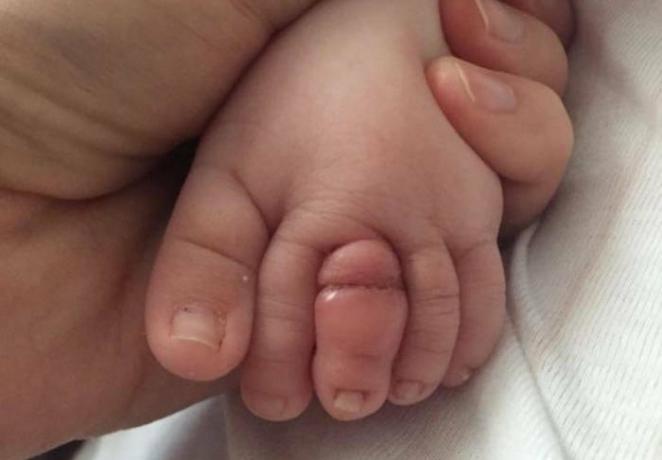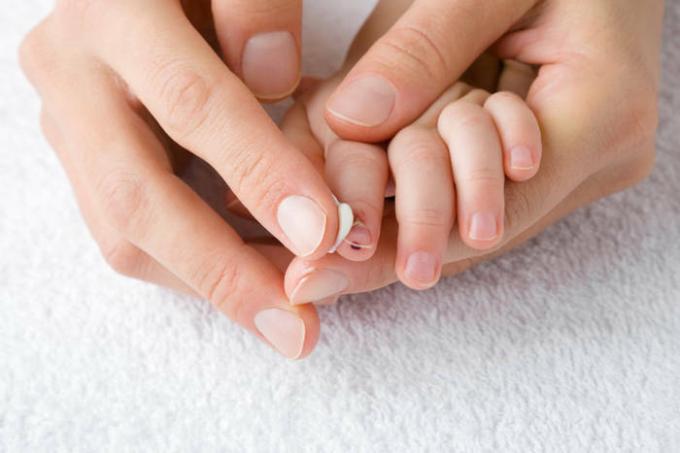What is "hair cord syndrome" and how it can end for a child. How to prevent the development of this disease and what to do if you notice a danger
A danger under the tricky name "hair cord syndrome" can lie in wait for any child. Just the other day, a girl with such a diagnosis was miraculously rescued in a Moscow hospital. During the game, the baby wrapped the hair from the doll around her hand. One of the hairs broke off and remained on the finger. The child went on like this for several days, and only then began to complain of pain. The hair cut into the skin so much that it blocked the access of blood to the phalanges. The case almost ended with the amputation of the finger: another day, and the baby could start gangrene.
What is "hair cord syndrome"

Several hours are enough for the development of necrosis (photo from open sources)
During the game, children often wind different threads and hairs on their fingers or wrists, which they then cannot get rid of on their own. It's good if the baby came to his mother with this problem. However, it also happens that he simply forgets about her and continues to play, as if nothing had happened. A thread or hair, meanwhile, cuts into the skin, gradually blocking blood circulation. At first, this does not cause much pain, so the child does not show anyone anxiety.
The more time passes, the more the foreign body "drowns" in the delicate baby skin. In the case of a child from Moscow, the doctors stated that the synthetic hair from the doll had practically grown into the tissues. The damaged area of the body swells and changes color. With prolonged disturbance of blood supply, necrosis (necrosis) of the limb occurs. The only way out in this situation is to amputate the problem area.
You should not reassure yourself that you certainly will not allow this trouble. It takes only a few hours for necrosis to develop in infants. Therefore, not only hairs and threads are considered dangerous (which, by the way, can wind up spontaneously around the child's limbs), but even elastic bands on anti-scratch mittens or children's socks. Doctors do not advise a child to put them on if, after wearing them, a "trampled" mark remains on the baby's wrists or ankles.
How to Prevent Hair Bundle Syndrome

To remove hair, take depilatory cream / istockphoto.com
This problem does not have a critical age: hair cord syndrome can develop in infants and children in the first years of life. But in infants, tissue necrosis develops much faster, so check your baby regularly and several times a day. It's summer now, babies spend a lot of time undressed, and there may well be mother's hair in the crib (especially if after giving birth they started fall out intensively). One such hair can twine itself around the fingers or wrists (in boys - also around the penis) and lead to irreversible consequences.
If you notice a problem, assess the condition of the damaged area: how much the skin is squeezed, whether the swelling has begun. In the event that the baby does not allow touching the limb, screams and cries, and the limb itself is swollen and becomes crimson - urgently call an ambulance or taxi to get to the hospital. If there are no such consequences yet, immediately remove the thread or hair and observe the child's condition for several hours.
To remove hair, you can dip the child's limb in water or lubricate with oil. Wet hair will be much easier to unwind. You can also try a depilatory cream: apply it to your hair and wait for it to dissolve, and then rinse the area with plenty of water. To remove the thread, you will need a magnifying glass, tweezers, and scissors. Using tweezers, try to grab the thread and lift it slightly above the skin to cut it neatly.
You will also be interested to read:
Why you shouldn't shake a nursing baby: it is dangerous for a baby's life
Safe baby sleep: how to properly equip a baby's sleeping place

